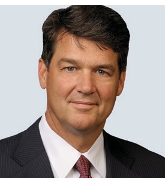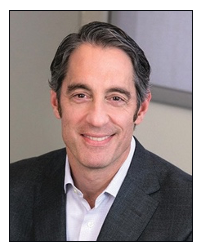A conversation with four Insurtech thought-leaders
This year has been nothing short of a challenge. And yet, it has forced us all to adopt, pivot and embrace new ways of thinking and communicating. One might even say, 2020 has offered us all a most unique opportunity: to become smarter, better and faster, if we choose to accept the mission.
The insurance industry was called upon immediately — to step up, and step in — to address the pandemic, civil unrest and inequality, weather-related disasters, technology evolutions — and so much more.
Looking toward 2021 and beyond, we see technology and innovation as no longer optional in our industry, but rather, a necessity to stay relevant — and even alive.
Through the lens of the independent retail broker, we arranged a virtual interview session with four of our BrokerTech Ventures (BTV) agency partners: Holmes Murphy, ABD, Woodruff Sawyer and Conner Strong & Buckelew.
Together, they offer perspective around questions leading us into 2021, and this new era of living, working and playing.
Susan Hatten, COO, BTV: As we look toward 2021, innovation is predicted to take on three key areas of trend. Please share your thoughts around how innovation may play into each of these most important issues:
• COVID-19
• Digital technology
• Inequality
Dan Keough: Holmes Murphy
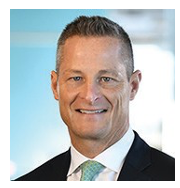 Racial tension, a global pandemic, divisiveness. These are real issues, with real ramifications which will be long-lasting and on a global scale. Customers will be thinking about what insurance may do to protect and mitigate against future situations of such magnitude. At a macro-level, technology driven by innovation is the great equalizer for our broader insurance community.
Racial tension, a global pandemic, divisiveness. These are real issues, with real ramifications which will be long-lasting and on a global scale. Customers will be thinking about what insurance may do to protect and mitigate against future situations of such magnitude. At a macro-level, technology driven by innovation is the great equalizer for our broader insurance community.
Innovation is a beautiful tool for shifting our perspectives and the way we think, so we can make changes in the way we work, lead and develop talent for the future. Tomorrow’s employees will expect their employers to be more uniformly inclusive and diverse in our industry. This isn’t a comfortable subject but it will be an important part of the industry’s future. Inclusive and diverse organizations approach opportunities and decisions with a much broader set of experiences and perspectives which leads to better decision making, leading to better outcomes, and thus, greater success.
“Innovation is a beautiful tool for shifting our perspectives and the way we think, so we can make changes in the way we work, lead and develop talent for the future.” — Dan Keough
Brian Hetherington, chairman, The ABD Team
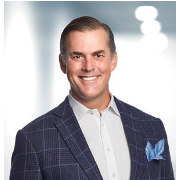 If we break down where we are at, there are three lenses to these issues. Historic vantage point, current purview and future lens. How are we: preparing, managing and addressing the current state. As an example: On prevention, we are now testing, tracing, and tracking for COVID-19. Smart devices like the novel Oura Smart-Ring was used to manage the “bubble” of the NBA playoffs — managing activity, temperature and sleep to measure for COVID-19 symptoms. Addressing current-state, what is ultimately the best way to recover and vaccinate for the future. Many of the measures preventing COVID-19 have prevented other illnesses during flu season. On the subject of inequality, how are our companies not only managing the inequality topic, but proactively choosing to do business with those who approach diversity and inclusion within the same lens. We believe businesses want to do business with companies that understand the progressive opportunities these issues present.
If we break down where we are at, there are three lenses to these issues. Historic vantage point, current purview and future lens. How are we: preparing, managing and addressing the current state. As an example: On prevention, we are now testing, tracing, and tracking for COVID-19. Smart devices like the novel Oura Smart-Ring was used to manage the “bubble” of the NBA playoffs — managing activity, temperature and sleep to measure for COVID-19 symptoms. Addressing current-state, what is ultimately the best way to recover and vaccinate for the future. Many of the measures preventing COVID-19 have prevented other illnesses during flu season. On the subject of inequality, how are our companies not only managing the inequality topic, but proactively choosing to do business with those who approach diversity and inclusion within the same lens. We believe businesses want to do business with companies that understand the progressive opportunities these issues present.
Mike Tiagwad, Conner Strong & Buckelew (CSB)
COVID-19 has caused us all to pause and reflect on traditional business development and how we have previously managed relationships. We have been forced to change, at an accelerated pace. The use of technology to supplant face-to-face engagement is a mode which is here to stay. Our agencies and our industry have been introduced to an abundance of tools, technology and digital products, through this unprecedented experience. BrokerTech Ventures initiatives drive our agency and personal digital transformation, through the vantage point of insurtech. On the subject of inequality, we are embracing an internally-led innovation challenge through CSB.This very specific example is one which challenges us to think differently, and more diversely, through a much broader lens.
Andy Barrengos, Woodruff Sawyer
Where creativity is a different way of seeing things, innovation is a different way of doing things. COVID-19 has been tragic on many levels but has also provided an opportunity for innovation. It has forced us all to ask ourselves how, and why, we were doing things a certain way pre-pandemic.
The tragedy is obvious. Loss of life, loss of jobs, isolation, deep disparities in impact across socioeconomic lines, and so much more. The opportunity exists in innovating ourselves and our businesses — looking at what, why, and how we do things differently in order to be more relevant and impactful for our people and our clients. People and organizations all over the world are experiencing the same opportunity for innovation — to get better and to challenge the strategies and positions of the past.
Question: Given our unique lens in the insurance value chain and direct engagement with the customer, how do you see innovation shaping consumer decisions and buying behaviors in the future?
Keough: Customers will think about things differently in 2021 and beyond. Consider historic points throughout challenging times of the past — 9/11, the great recession, as examples.
There is nearly a post-traumatic stress effect, once you’ve experienced such times. This year has taught us that it is incredibly difficult to have the same level of impressions in both the customer and employee channels, post-pandemic. How do we, as leaders and employers, look ahead to creating meaningful experiences for both the customer and employee channels. The buyers of the future will evolve, and we need to equip our up-and-coming talent to lead and manage.
Mentoring will be absolutely critical to our industry for 2021, and beyond.
Tiagwad: In the future, it is evident that customers will choose to do business with those who are more progressive and forward-leaning. Renewals and presentations are no longer in binders, and reams of paper. Rather, our professionals are using technologies like Surface Pros, iPads, etc. In the same vein, while we may enjoy the niceties around working remotely, there is a certain amount of vulnerability in all cyber trading exposures of our business which we must be mindful of and preventive around.
“Where creativity is a different way of seeing things, innovation is a different way of doing things.” — Andy Barrengos
Hetherington: The old adage of “buyer beware” has now evolved to portray the modern rule of “seller beware,” or, Caveat Venditor. Buyers are being inundated at every turn with insurtech information, and these buyers are doing their homework through Yelp, LinkedIn, and search engines. As stewards on behalf of our customer, and ultimately for our industry, pre-work must happen in order for us to make the most informed and accountable decisions related to innovation and technology.
Barrengos: The buying and decision-making process, all the way through to the final purchasing of insurance, is going to need to be simpler and more enjoyable. Simple + easy is the way of the future. I think commercial insurance buyers want to spend less time in the actual buying process, and more time around the “why” behind the purchase. The degree to which innovation can truly improve that process will have a significant impact on the industry into the future. The goal is to create a delightful experience, for both our customers and our employees — an experience built around the advice and advocacy our clients want and our people want to provide. And powered by a simpler, easier process that creates more time for the human experience at the coreof what we do. This is the role of the broker and innovation — challenging our perspectives and doing things differently. This the ticket to get us there faster.
Question: Innovation will certainly play a crucial role in 2021 in the world of healthcare. Any predictions on how this may impact our agencies and the role of the employee benefits broker?
Keough: Technology is again the great equalizer in our relationships, and this applies to the employee benefits channel just as much as it does for Property & Casualty. Who’s adding value, and where, will be the ultimate question. There will continue to be compression of the cost structure in our industry. We are a big part of that, as brokers.
Tiagwad: I see analytics playing a much larger role in healthcare and the value-chain as we move forward into 2021. As an example, the use of predictive modeling to circumvent the larger claims will increase.
Barrengos: When we look at digital tech as it relates to healthcare and consumers, I think we are going to end up innovating in terms of prioritizing which digital technologies are the most important to us — and which are lesser so. This about what worked — and didn’t work, with the ACA years ago. Marrying of need and desire, with priority, will continue to inform digital technology — especially in the healthcare space, moving forward.
“On the subject of inequality, how are our companies not only managing the inequality topic, but proactively choosing to do business with those who approach diversity and inclusion within the same lens.” — Brian Hetherington
Hetherington: The broader concept of wellbeing is taking root. How do we as employers take accountability for physical, financial, psychological ailments? Evolution is moving from wellness — to wellbeing. It is an employers’ role and responsibility to educate employees. How are we proactively addressing the psychological component through healthcare and clinical tools and technologies? We must hire the right coach — at the right time. This means creating the same coaching and education for employees, available to them in their own moment of need.
Keough: Holmes Murphy has a company recent to our brand portfolio — ethOs — which addresses this exact point. We ultimately uncover deeper insights into our customers beliefs around wellbeing and engagement of the person (employee), business culture and industry strategies. Healthcare is a high cost, high complexity industry. We see pricing transparency as an expectation in the future, and potential for more robust exchange platforms. Technology will begin to shiftin the underwriting of benefits in the future. An example of this is one of our BTV 2020 Cohort companies, Goldfinch Health.
Question: Each of you (and your firms) are a part of BrokerTech Ventures (BTV). How is BTV embracing innovation and your collective distribution platform, to shape and drive innovation moving into the new year?
Keough: Through BTV we are developing a labs (by agency) concept, to recognize employees who are taking active roles in elevating innovation through the adoption of pilots, proof- of-concepts, and integrations of new technologies within each of our firms.
In the future, our own BTV agency employees may apply for our Accelerator program. (BTV’s Accelerator brings broker-centricinsurtech startups together to provide seed-funding, a hyper-accelerated curriculum, and direct access to our Agency & Non-Agency Mentor circuit.) This would truly be the realization of full potential in integration of the employee, customer, and innovation circle.
“Where creativity is a different way of seeing things, innovation is a different way of doing things.” — Andy Barrengos
Tiagwad: Through BTV, we are providing the lens direct to and from the industry— which is key into shaping innovation for the insurance industry. This sets us apart from other alternatives.
Keough: Through BTV we are transforming the industry from within — working from the inside-out, rather than the outside-in. It’s a powerful broker network if we leverage the insights through the learnings of our customers and ultimately the relationships with our insurance companies. Insights into multi-channel areas of potential for our industry — HighWing as an open exchange platform, Submittable as an exposure and vetting tool, Digital media to amplify our voice, and BTV friendly capital opportunities — sets us apart from other initiatives. Innovation touches all five of our BTV “Towers.”
Hetherington: Innovation is not just in Silicon Valley. It is happening globally. Look internationally…or even, in Iowa, within the walls of Holmes Murphy. We need to make sure that we can run faster, better, stronger. BTV has made us stronger, more agile, more swift. We are effective and have been, through leaning in to innovation. BTV becomes an open-source architecture for long term success — channeling our foundational philosophy of the infinite game. I don’t think that this initiative would have worked without Holmes Murphy’s leadership, lifting up M3’s original idea — altruistic in your generosity — a credit to Holmes Murphy. In turbulent times, we concentrate on the long term, staying focused. And we trust our partners.
“I see analytics playing a much larger role in healthcare and the value-chain as we move forward into 2021. As an example, the use of predictive modeling to circumvent the larger claims will increase.” — Mike Tiagwad
Keough: The power of the relationships in a disconnected world is what allowed BTV to move forward. This all started with relationships, at the very core. Relationships can be supported and elevated through technology, but the relationship remains as the core heartbeat of our business.
Tiagwad: To us, BTV is built on trust. Though technically we all came together as competitors. We are now collaborators and convenors of innovation, for the bettering of our insurance industry. Greater solutions, better outcomes, and deeper relationships.
“We will continue to work together, to skate in tandem — driven by where the puck is going.” — Dan Keough
Hetherington: BTV is what affords us the lens of Caveat Venditor (the seller is responsible for any problem that the buyer might encounter with a service or product). We are all better, smarter, more insightful brokers through the lens of BTV. As Wayne Gretsky once so wisely offered — he was successful because he, “skated where the puck is going…not where it is at.”
Keough: Could not agree more, Brian. I see BTV as a collaborative force for the industry, and as a convening platform in the non-competitive space. We will continue to work together, to skate in tandem — driven by where the puck is going.
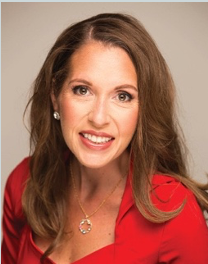 SUSAN HATTEN is chief operating officer of BrokerTech Ventures and oversees corporate and community engagement at Holmes Murphy. Prior to joining Holmes Murphy, Hatten led business development for a marketing communications and advertising agency for more than a decade. In addition to mentoring within
SUSAN HATTEN is chief operating officer of BrokerTech Ventures and oversees corporate and community engagement at Holmes Murphy. Prior to joining Holmes Murphy, Hatten led business development for a marketing communications and advertising agency for more than a decade. In addition to mentoring within
the insurance industry through The Global Insurance Accelerator, CPCU and more, she dedicates much time to community involvement through fundraising and volunteering for several organizations.
Hatten was named the 2017 Meredith Corp. Emerging Business Woman of the Year and is a member of the 2011 Forty Under 40 class by the Business Record, among others. Hatten is a graduate of Iowa State University. Contact her at shatten@holmesmurphy.com.
BROKERTECH VENTURES (BTV) was founded in 2019 to provide a venue for the best minds in insurance and technology to collaborate and bring to market leading-edge ideas and solutions. BTV is the first broker-led investor group and accelerator program focused on deliveringinnovation to the insurance agent-broker industry. BTV invests in the research and testing for each of the chosen startups, provides access to veteran industry mentors, and helps scale the technology to market through broker distribution channels.
The two founding firms of BTV are headquartered in the Midwest: Holmes Murphy, in Des Moines, Iowa, and M3 Insurance, in Madison, Wisconsin. Des Moines ranks as the global hub of insurance, on the coat-tails of Hartford, Conn., and New York City, NY.
Learn more at www.brokertechventures.com, or follow us on Twitter @BrokerTechVen.

